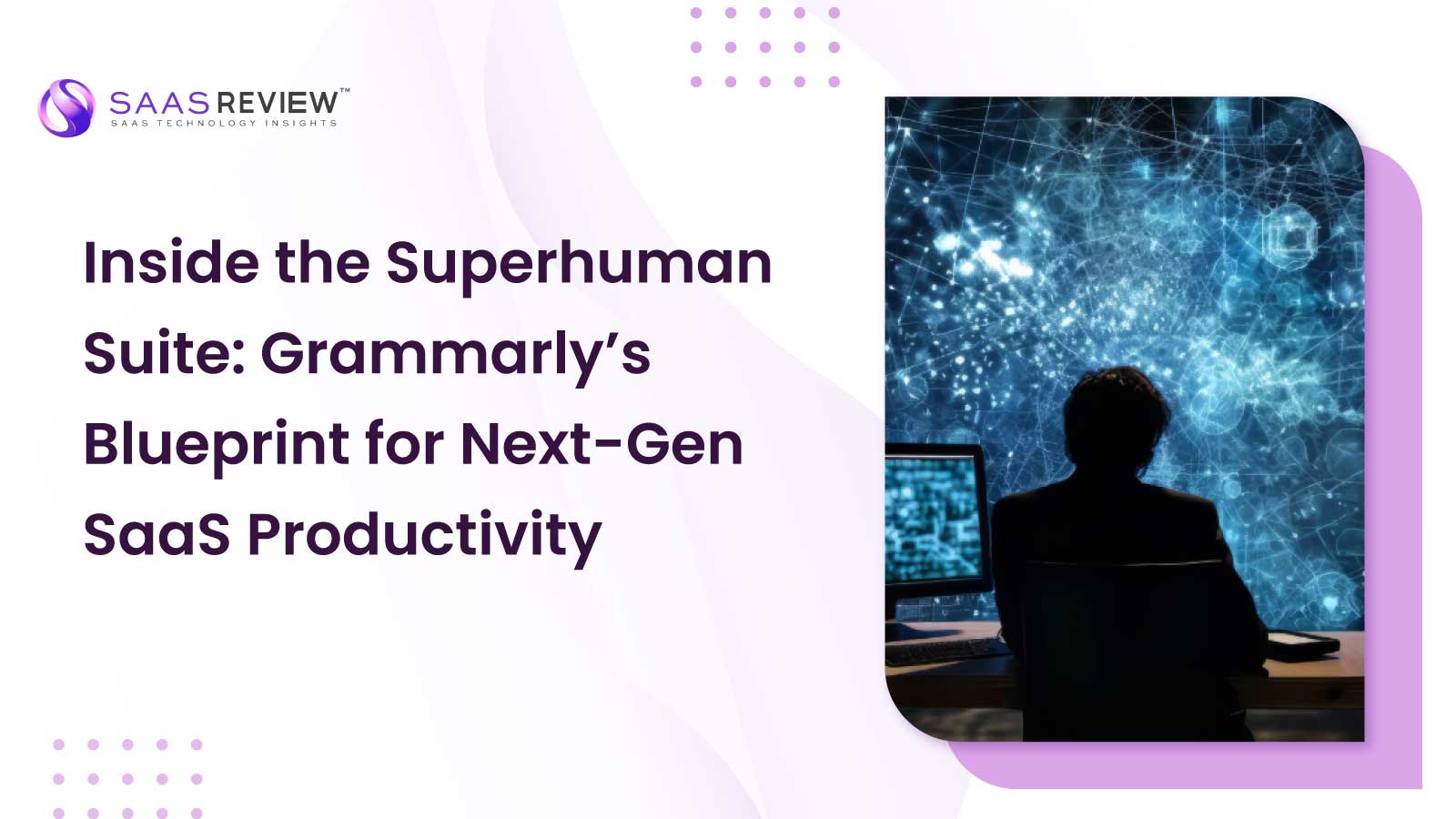
At Grammarly’s recent announcement, the company revealed a comprehensive rebrand to Superhuman, along with the launch of the Superhuman Suite and Superhuman Go. This development offers a compelling case study for SaaS companies navigating the evolution from single-app utility to platform-level ecosystems.
Grammarly is now operating under the new brand name Superhuman, bringing together Grammarly’s writing assistant, Coda’s collaborative workspace, Superhuman Mail, and the newly introduced Superhuman Go agent platform.
According to the CEO, Shishir Mehrotra, this rebrand embodies a broader mission: “AI that makes every person better by working everywhere they work, understanding how they actually work, and bringing them what they need at the right time.”
What’s striking here is not merely a name change but a shift from a stand-alone writing tool to a unified productivity platform. The firm claims over 40 million daily users and more than 1 million integrated apps and websites.
Platform Thinking: Many SaaS companies begin with one core module and struggle when faced with adjacent productivity demands. Superhuman’s suite approach shows the benefit of uniting complementary capabilities (writing, workspace, inbox, and agents) under one roof.
Workflow-centric AI: The new Superhuman Go aims to bring AI agents into the flow of work rather than forcing users to leave their context. For example, Go can pull CRM account details when replying to a customer email or schedule a meeting when a chat goes off track.
Trust and Data Governance: Given Grammarly’s prior positioning on writing and privacy, Superhuman emphasizes that it does not monetize user content or allow third-party models to train on it. That is a critical issue for enterprise SaaS buyers.
Migration and upgrade clarity: Existing users of Grammarly, Coda, or Mail will see continuity; they retain control and permissions while gaining new capabilities as part of the suite.
Partner and ecosystem opportunities: The company launched a Superhuman Alliance partner program and an “Agent Store” for third-party and developer-built AI agents. That underscores how SaaS growth increasingly rests on ecosystem-enabled offerings.
According to a recent study by Accenture, more than half of workers already use AI tools for productivity, but many report that the tools remain disconnected from daily workflows, requiring manual context switching. This gap between promise and practice signals a clear opportunity for platforms that embed intelligence seamlessly.
Moreover, as SaaS buyers gravitate toward platforms over point solutions, we’re seeing demand shift: vendor lock-in concerns still exist, but buyers increasingly prioritize unified experiences across writing, collaboration, inbox, document, and task workflows.
Evaluate workflow fit: Does the tool you’re considering embed within your teams’ natural workflow (for example: email, chat, docs, CRM), or does it force a new process? Superhuman’s positioning emphasizes embedding rather than rearranging users’ habits.
Check integration depth: Look for platforms that not only integrate broadly (100+ apps claimed by Superhuman) but also deeply, drawing data from your systems (e.g., CRM, tickets) to drive context.
Trust and data control: Any productivity platform operating in writing and collaboration must clearly articulate how user content is treated.
Ecosystem and extensibility: A suite is only as strong as its third-party and agent ecosystem. The Agent Store and partner program mentioned by Superhuman may become critical vectors for value add.
Migration planning: When a vendor pivots from app to platform, consider what it means for your current workflows, licensing, and vendor strategy.
For those working in SaaS content, marketing, or product operations, this update offers usable lessons:
Positioning matters: Moving from “writing assistant” to “productivity platform” signals growth potential.
Storytelling around context-aware intelligence resonates with buyers facing fragmentation.
Ecosystem narratives (Agent Store, Partner Alliance) strengthen the promise of extensibility and long-term value.
Messaging around trust, data ownership, and privacy remains key, especially as generative AI features proliferate.
Over the past two years, enterprise SaaS buyers have shown growing fatigue with tool fragmentation. The digital employee experience is an essential component of the overall employee experience, according to a Gartner analysis. Digital workplace technology experiences can be used by organizations to meet organizational goals related to culture and community, foster personal and team growth, and encourage digital dexterity.
Superhuman’s rebrand capitalizes on this demand for consolidation. By combining communication, collaboration, and content-creation functions, it positions itself as a single hub for productivity continuity. This approach also aligns with the emerging SaaS preference for ecosystem-based pricing and value measurement, where efficiency gains are tied not only to tool count but also to workflow harmony.
Superhuman’s transformation offers several instructive cues for SaaS innovators. First, brand narrative matters as much as capability expansion. Moving from Grammarly’s single-purpose positioning to a broader identity required reframing not just what the product does but how it fits into modern work culture.
Strategic rebranding works best when backed by tangible platform advancement; in this case, the integration of Go and Suite to deliver contextual support across applications.
Finally, the move underscores the importance of user-centric interoperability. SaaS leaders designing their next phase of growth should ask: how can our platform become the connective layer rather than just another app in the stack? Superhuman’s bet on embedded intelligence suggests where enterprise productivity platforms are heading next.
Ready to elevate your sales function?
What is Superhuman, and how is it different from Grammarly?
What happens to existing Grammarly and Coda users?
How secure is Superhuman with regard to data privacy?
Is Superhuman’s suite available now, and what are the pricing details?